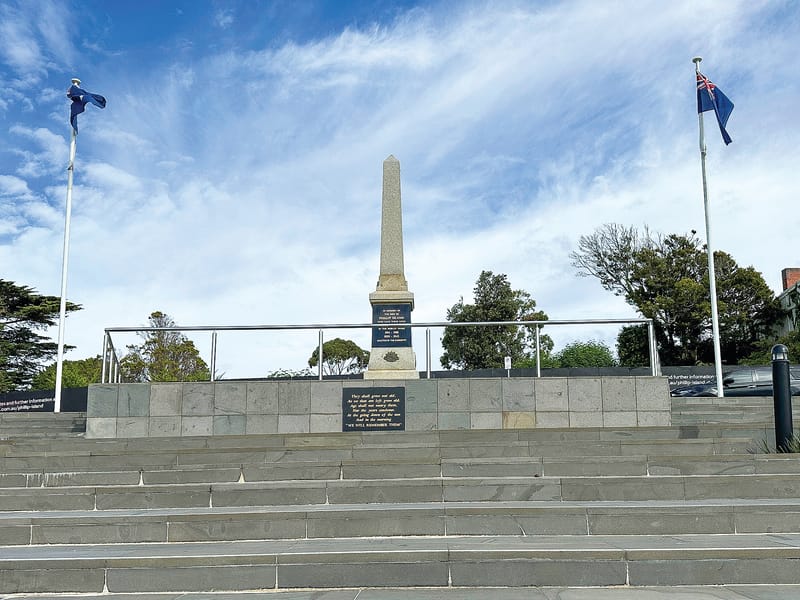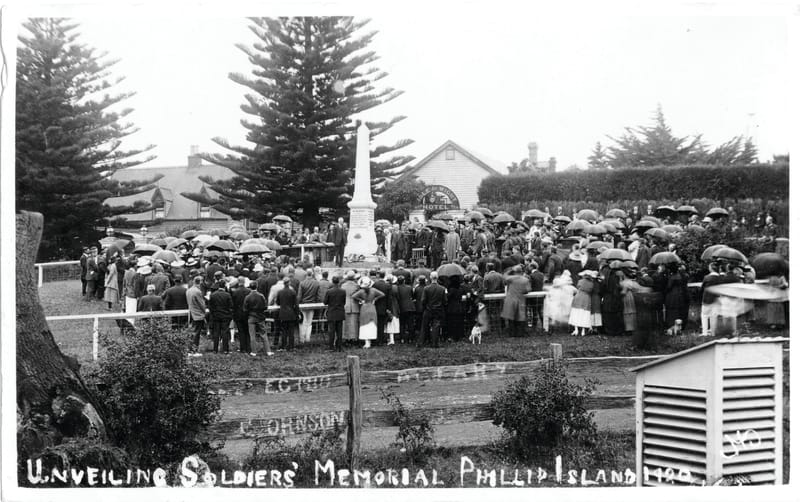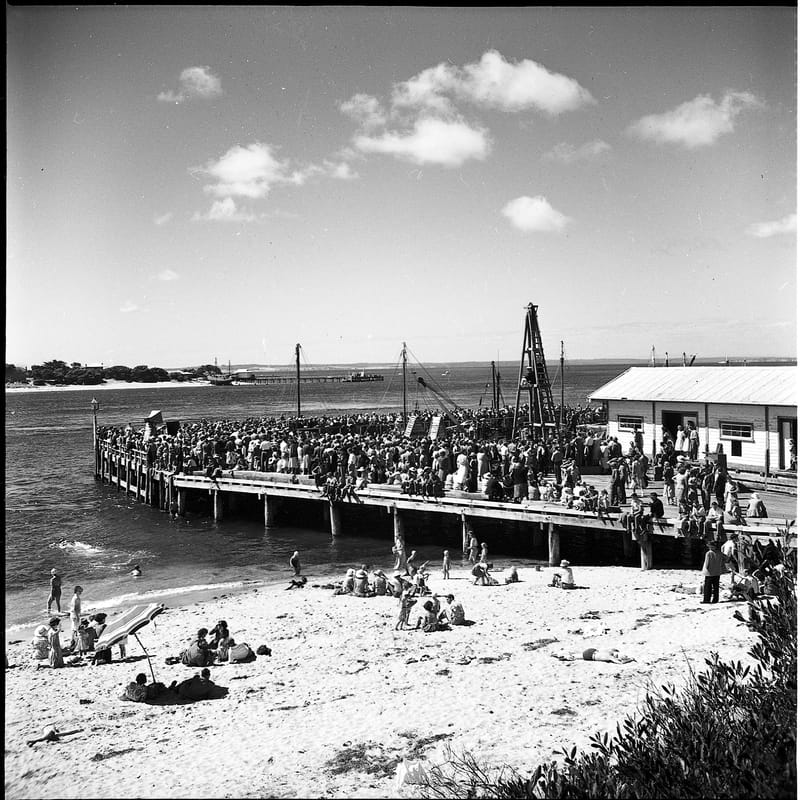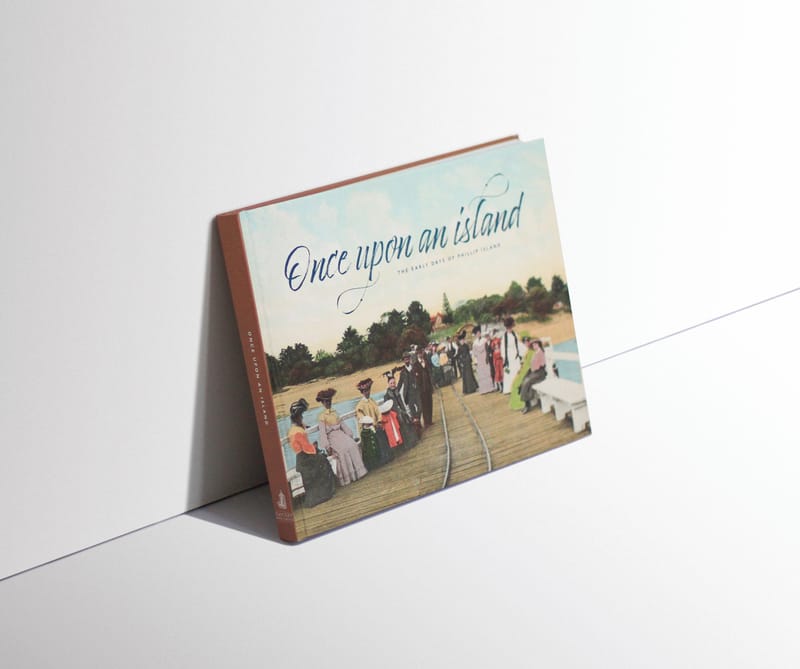The first arrivals
So what was life like for the early settlers of Phillip Island? With no supermarket to pop to for a litre of milk, and no hardware to visit for building supplies, let alone a bridge, ferry or cars, how did pioneers forge their lives on the island...
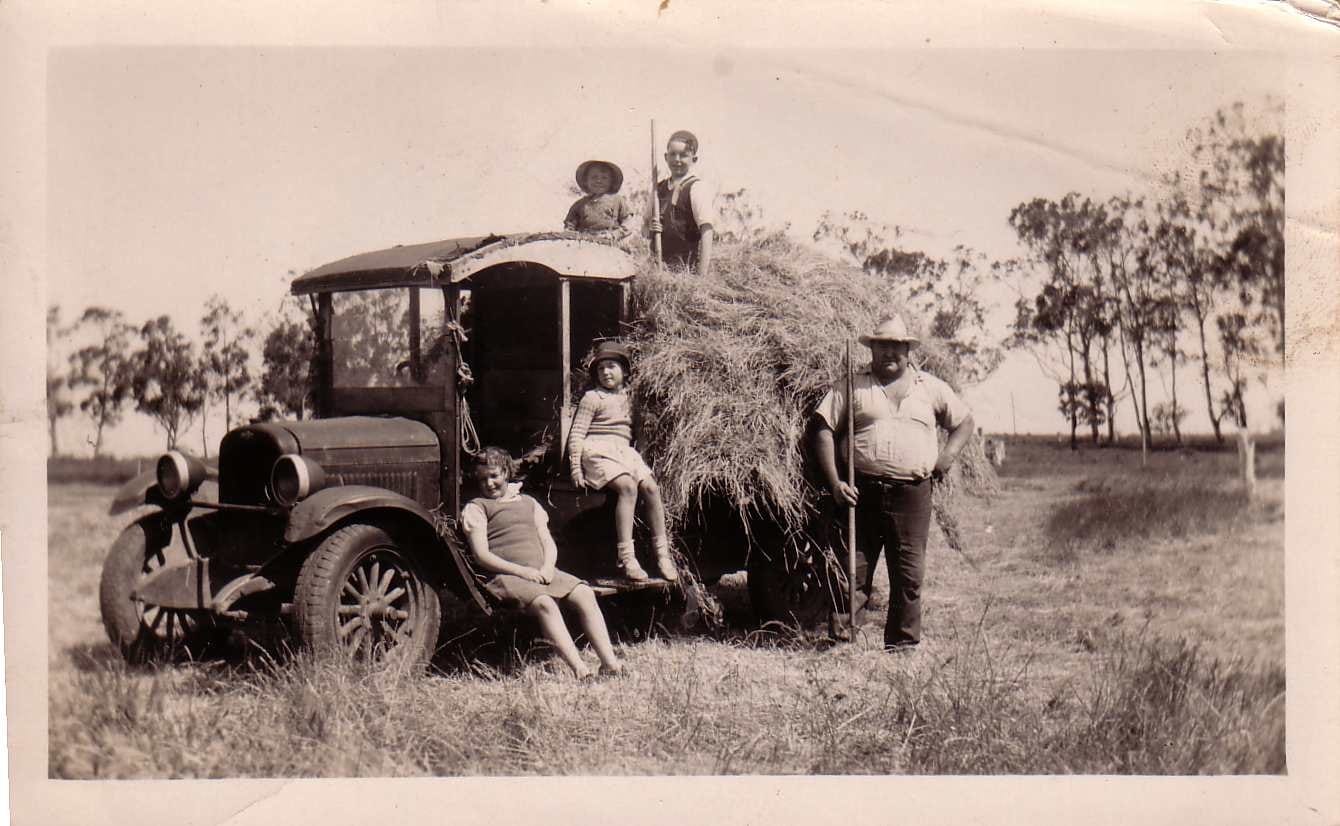
So what was life like for the early settlers of Phillip Island?
With no supermarket to pop to for a litre of milk, and no hardware to visit for building supplies, let alone a bridge, ferry or cars, how did pioneers forge their lives on the island, which was a four-day trek from Melbourne.
According to Christine Grayden, from the Phillip Island Historical Society, who has written this following account of early island life, in 1872, four years after the first sale of land on the island via a ballot, about 165 settlers held property here.
Generally, Christine writes, they had little or no shelter when they arrived on the Island’s scrubby shores.
They built wattle and daub huts, fenced their few animals in with tea-tree, and shovelled shallow dams, then lined these with tea-tree.
Tracks were corduroyed with tea-tree.
Implements were forged by blacksmiths or home-forged, such as those by Mr McGregor of Pyramid Rock, and then provided with tea-tree handles.
In fact, tea-tree was so widely used it became known here as “Phillip Island Hickory”.
It was an era when Victoria had little transport between Melbourne and potential wheat supplying areas.
Settlers saw Phillip Island as being suitable for wheat growing and within easy boating access to the increasing market in Melbourne.
But in these early years, caterpillars, grasshoppers and weather devastated the wheat crop and the 1870s saw a general exodus away from Phillip Island and by 1902 the population numbered no more than 50 settlers.
The land was largely divided between two major landholders – Cleeland and Harbison – and township areas were generally divided amongst six families: West, Richardson, Anderson, Vaughan, Kennon and Grayden, with the rest holding individual allotments.
Both Harbison and Cleeland raised horses, sheep and some cows, while the remaining smaller landholders grew chicory and mustard.
The remaining population comprised shopkeepers, farm hands, ship and house builders, horse breakers, or young men who worked on the Kilcunda to San Remo railway.
Some, like the Kennon, Walton, Grayden and Richardson families, netted fish which were rowed to Hastings, then sent by horse transport to the fish market, at that time on the present site of the Flinders Street Station clocks.
Phillip Island’s isolation and small population from 1869 until after World War 1, meant that settlers received little Government attention, and could not support their own council.
Consequently, moving stock or a household was a major ordeal, with oarsmen helping swim cattle across the Passage from Newhaven to San Remo.
Because of the swift tide, the men had only a few hours between ebb and half-flood tides and the average crossing was 40 – 50 cattle a day.
Social life
During the earliest days of settlement, rough terrain prevented settlers in distant properties from socializing.
Mrs McGregor of Pyramid Rock did not bother going to Cowes for nine years after the family’s arrival here.
However, for those closer to Cowes, 1870 marked the beginnings of the centre of Phillip Island’s social life for many years – the opening of a church.
St Philip’s Church of England was the first church to be built and was officially opened by Georgiana McHaffie.
Evening choir practice was another highlight of the week, providing prospective beaus a chance to escort sweethearts home.
A little later, other denominations became established, including the Reorganised Church of Jesus Christ of the Latter Day Saints, the services for which were held in Jack Hall’s barn, Ventnor Beach Road, then later moved to the Ventnor school.
The first Catholic Church was opened on January 22 1933, although Mass had been celebrated in various venues from 1870.
The first Presbyterian services were held in the open under a gum tree and the original Presbyterian Church was built in 1895.
Stan McFee Snr recalled another social activity associated with the churches, colloquially known as “tea fights”.
These were afternoon teas organized by church guilds, but due to the jealousy between the youth of Rhyll and Cowes (due to their taking inter-town sport so seriously) free-for-all fights generally followed.
Cricket teams first became established in the 1880s and social and competitive tennis from the 1890s.
Bowls was first played on a special lawn at Rhylston Park, Cowes, from the 1890s.
“Easter Monday Sports” were held as early as 1875 in Cowes along the Esplanade, and at Ventnor, on the foreshore near Anchorage Road. The sports ranged from gentlemen’s high jump to ladies rolling-pin throwing, sheaf tossing and the dray race saw half a course galloped in a dray, then the draught horses were unharnessed and ridden bare-back to the finish line. Lots of children’s events were also held; usually run in bare feet.
Very little prompting was needed for early Phillip Islanders to get together for a dance or celebration once a few roads had been defined through the scrub.
During the 1870s, a chef from London named Francis Bauer established the original Isle of Wight Hotel, later described by one visitor as “a picturesque Swiss-looking house with its peaked gables, long galleries and verandahs”.
A banquet was given at the Isle of Wight by John West to celebrate the opening of the Island’s first kiln in the main street of Cowes.
Social events
Prior to halls being built, some adventurous young people made a clearing in the scrub near what is now the Boomerang Caravan Park, and danced there to tunes of harps, played by Violet Jeury and Miriam West.
The need for a dancing teacher was fulfilled by Alex McLardy Snr from 1888 and dances became extremely popular for many years.
Other popular social occasions included “monster picnics” held at various locations around the Island, annually after Easter.
But possibly the biggest social event of the year was mutton bird egg collecting.
Groups from all over the Island and the Mornington Peninsula would camp at Cape Woolamai and spend the week ‘egging’, an activity that later became illegal.
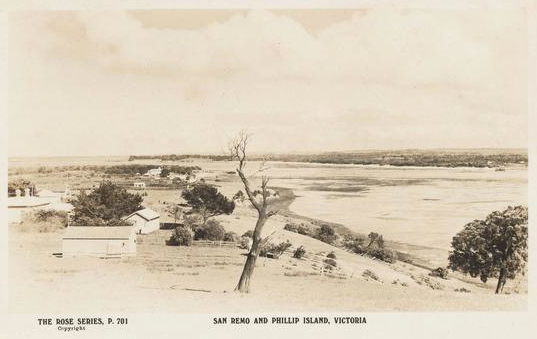
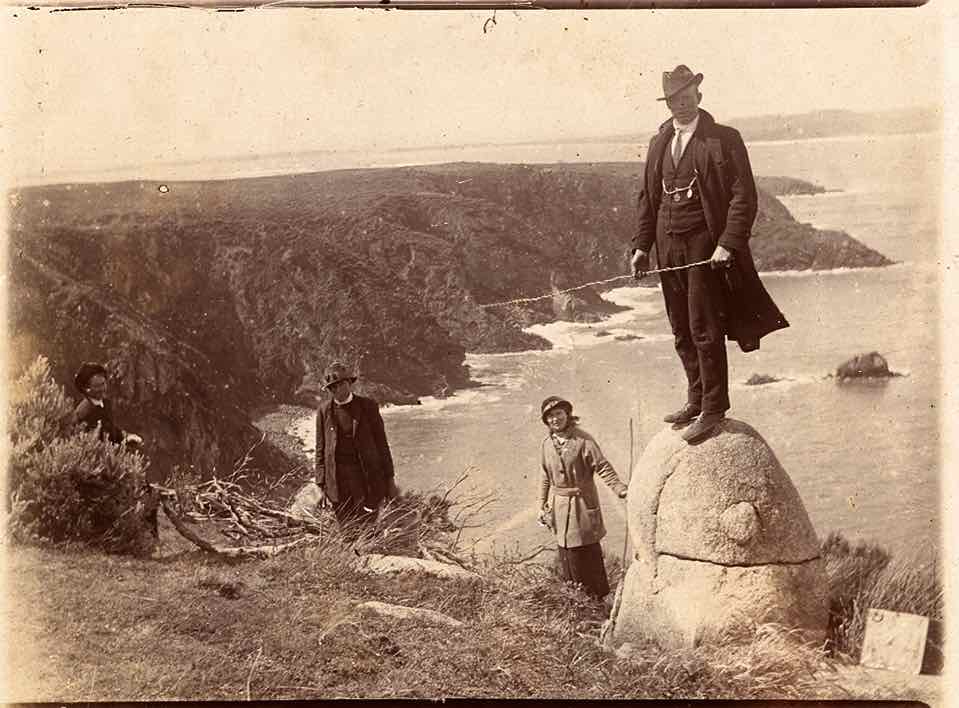
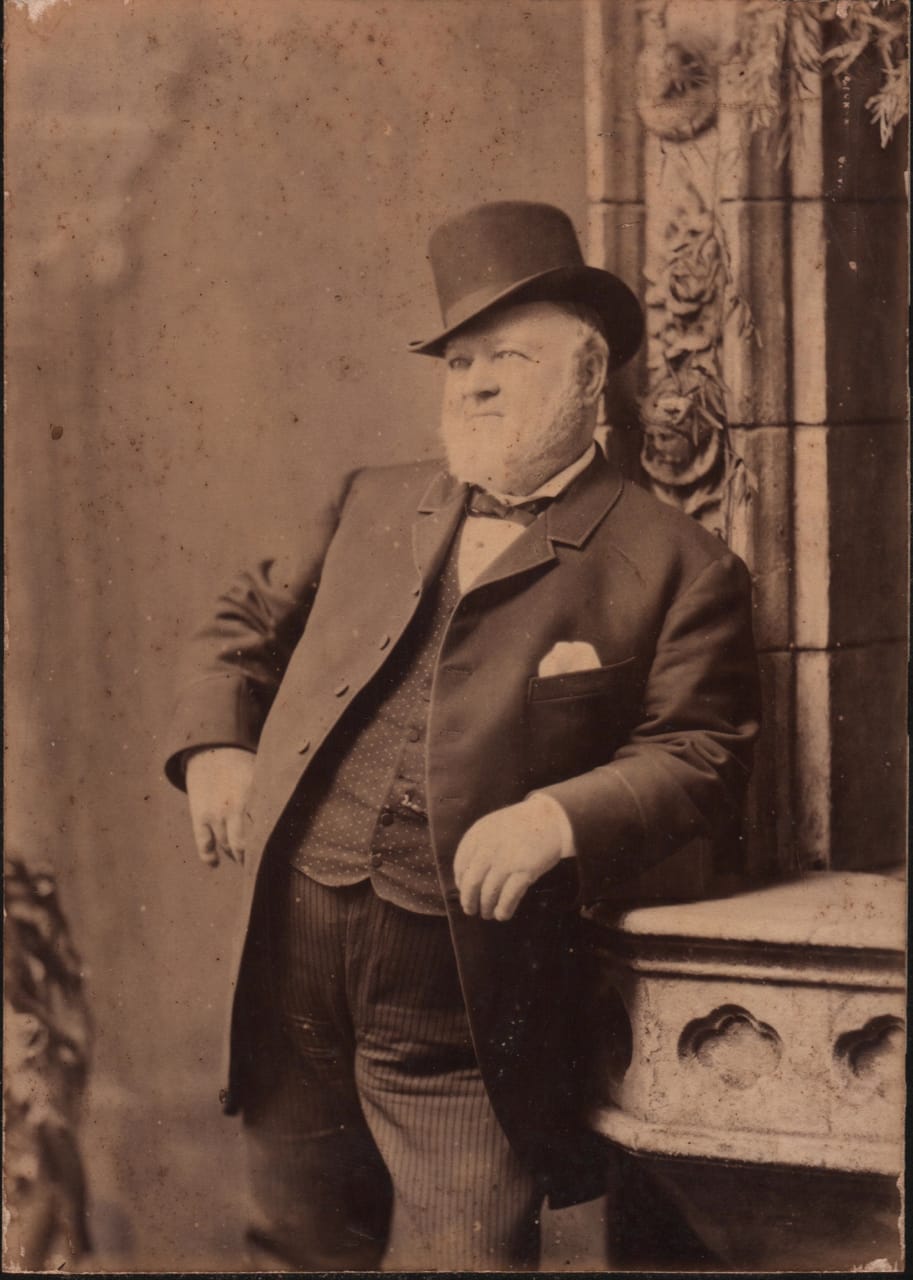
This they did by hooking eggs out of burrows with plaited wire, or collected eggs from the surface of the colonies.
The collected eggs were stored in pickling drums, and were an extra source of food and income for Phillip Islanders.
During April many Islanders would also brave the gales to collect young fat mutton birds for food and sale.
Family life
Typical of the times, early Phillip Island settlers had large families - during the 1870s Solomon West had eight children and the Smith family 13.
The Kennon children’s ‘pet’ names read like the characters of a Victorian novel: Bill, Hetty, Huey, Sissy, Florrie, Lizzie, Emmie, Edie, Ruth, Beatie and Maggie.
Phillip Island had no resident doctor until 1910 – with Warley Hospital opening in 1923 - and home nursing and midwifery were relied on.
For thorough medical attention, a doctor had to be rowed from San Remo, or the patient had to be boated to Hastings, or later to Stony Point, and then to Melbourne and hospital by coach and/or train.
If a death occurred, the coffin had to be taken to the cemetery (surveyed in 1870) in very difficult circumstances.
John Smith’s sister, Mary, died a child in 1870.
Because the cemetery was not then officially opened, her father had to sail to Hastings, walk to Mornington to obtain the right to make a grave, then walk and sail home again.
He then had to carry the coffin on his shoulder through the scrub for two miles, as no track existed, and dig the grave and bury his small child.
We can scarcely imagine his thoughts and feelings as he doggedly set about these tasks.
Others were buried on the family holdings.
Generally, on the farms the older boys would help in the fields, the next oldest would do heavy chores such as chopping wood or hand-milking the cows, and the girls would help mother in the house, with small children, with washing, and with never-ending sewing and mending.
Homes
When Phillip Island was first opened for settlement, many of the first settlers built wattle and daub huts while trying to make enough money to import housing materials.
Some of the wealthier residents built substantial homes, such as the Cleelands who began building Wollomai House in 1869, and finished 1889, when it was described as “a country home made beautiful by garden, orchard and fernery”.
When Robert Gall arrived from Melbourne in March 1869, he waited two days for materials, and within 14 days had built a substantial weatherboard house for his family.
Mr Gall was a builder and timber-worker who kept a diary and detailed accounts.
In July 1869 he charged two pounds ten shillings to build a parlour chimney; three pounds to build a kitchen chimney and one shilling per yard for lathing and plastering the parlour, kitchen and bedroom of a new home.
All of this work left change out of twenty pounds ($40).
Nevertheless, many of the first settlers never did build substantial dwellings, and after most left during the 1870s, their huts were quickly demolished by weather and wandering stock.
More settlers arrived near the turn of the century.
Once roads were defined and scrub cleared, houses and their gardens were more visible, with Rhylston Park, still off Thompson Avenue, also built in that era.
Schools
After Phillip Island was opened for settlement, the first schools were small, private affairs.
R A McIllwraith recalled the first school as being run from a hut on the beach at Rhyll by a Mr J Cheyne, who later moved to the Back Beach area.
A Mrs Winning also had a school of about 30 pupils in a cottage near Five Ways, known as Gillian’s School; an old well still marks the spot, set back from Coghlan Road.
A school-house built in Newhaven during the 1880s was run by Mr and Mrs Thompson.
But the building was so small the Thompson’s daughters had to convert their sleeping quarters into a school-room every morning and back to a bedroom in the evening.
The establishment could not afford a clock, so the 20 or so students were taught to read a sun-dial.
St Philips Church of England building was also used as an early school from 1873 and a Miss Welch also ran a small school near the corner of Settlement Road and Thompson Avenue.
Cowes State School opened in 1872, due to the large numbers of children in the area, many of whom rode or walked up to seven miles to attend.
Rhyll School did not open until July 1891. Stan McFee Snr recalled how, when he started school there in 1894 it was a “half time school” with some education in San Remo.
Bert Grayden also went to half time school at Newhaven until third grade and remembers that the teachers would “whip the hide off you” for any mischief.
Many children lived outside the distance limit of compulsory schooling, and so had very little formal education.
Others were taken out of school during chicory digging season, or were unable to make the journey during weeks of seasonally rough weather.
Two of Samuel and Winnifred Pickersgill’s children, Lill and William, were employed by the McHaffie's as house-maid and stable-boy respectively.
Mrs McHaffie attended to their education, and it was so thorough that William was later able to educate his own daughter, Elizabeth Agnes, who was always kept home to look after the smaller children.
At Ventnor, prior to the State School opening in grand style in 1923, school was held in the Ventnor Hall (now demolished) from 1914-23. Prior to the hall being built, Ventnor children who were able to attend school, walked, or were driven in a dray to Cowes school by a jolly singing German.



